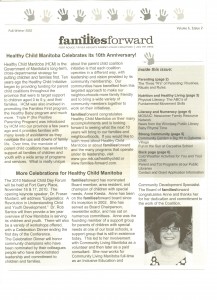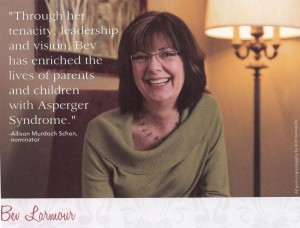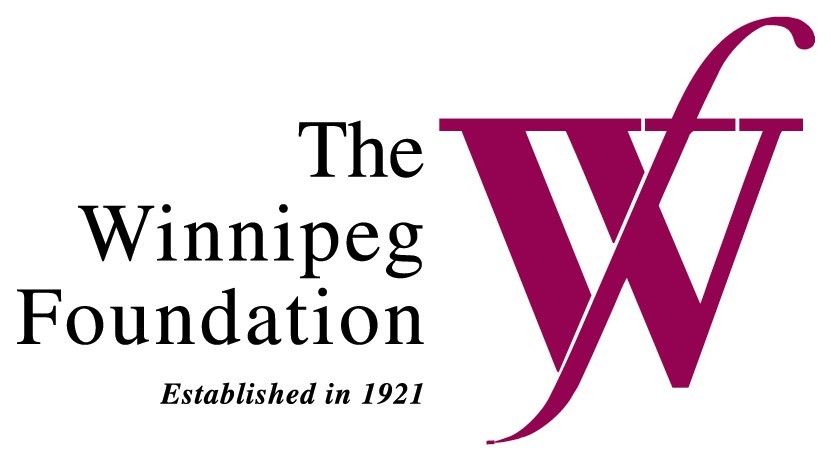Community of Friends presents a Question and Answer session on Asperger Syndrome on December 8, 2011 from 1:00-2:00pm at St. Aiden’s Church (274 Campbell Street). For more information please see the poster here.
The President of AMI, Anne Kresta`s family was featured on Shaw TV, please view the video of Asperger Syndrome in Manitoba here
Model Me Organization and Motivation
It’s often difficult for children with autism and Asperger’s Syndrome to perform tasks that require so-called “executive functioning” skills. The Model Me Organization & Motivation™ video targets skills under this umbrella related to organization and self-motivation. The DVD features real children modeling the skills. Each scene lasts between 30 seconds and 3 minutes, depending on the chapter. At the end of each chapter is a storyboard summary of the topic.
Topics include:
- Do My Best
- Planning Ahead
- Being on Time
- Note-Taking
- Organization
- Persistence
- Break it Down
- Flexibility
- Focus
- The Big Picture
- Memorization
- Mistakes
Run Time: Approx. 63 minutes
Format: DVD
Price: $29.95
Recommended for ages 9-17
Visit www.modelmekids.com for more information.
Congratulations to Anne Kresta who has been named a Community Champion for your leadership and commitment to children and families to be celebrated at the National Child Day Forum on Nov. 16! Well done! We are proud of you. You are very deserving of this recognition!

For Immediate Release!
Asperger Manitoba Inc. (AMI) proudly announces the launch of Phase 1 of The Asperger Manitoba Resource Centre (AMRC). Part of a three phase plan, the AMRC will develop and deliver accessible, appropriate supports for both children and adults with Asperger Syndrome (AS) in Manitoba as well as their parents and caregivers.
With grant support from Investors Group and The Winnipeg Foundation, and in partnership with the School Psychology Program in the Psychology Department at the University of Manitoba, and the Society for Manitobans with Disabilities (SMD) Self-Help Clearinghouse, AMI has begun providing programming aimed at supporting adults with AS, an autism spectrum disorder, who are otherwise ineligible for support services in Manitoba. The services being provided in Phase 1 of the project include a skills-for-living program. Group participants work through curriculum addressing those areas with which they are experiencing the most challenges within their daily lives. These include social skill development, anger management, anxiety, peer relationships, and job readiness. Other services being offered in Phase 1 include a peer support group for adults with AS, a peer social group for adults with AS, a support group for caregivers of adults with AS and an online newsletter and networking opportunities.
On June 10, 2010, AMI will be celebrating the opening of the resource centre with a ribbon cutting ceremony at the SMD Self-Help Clearinghouse. Representatives from Investors Group, The Winnipeg Foundation, University of Manitoba and the SMD Self-Help Clearinghouse will be on hand to bring greetings. The participants and facilitators of the first adult skills for living group will offer their insights into the value of this project and AMI’s future plans for the project will be presented. All are welcome to attend.
AMI hopes to expand the programming offered by the resource centre in Phases 2 and 3, to include more skills for living groups, available on a year round basis for adults with AS, as well as providing increased supports for families of children with AS, skills for living groups targeted to younger children and adolescents with AS and outreach activities throughout the province.
Future phases in the development of the resource centre will also include the creation of a resource library, and the hiring of a staff member to help with the daily inquiries from individuals and families throughout the province. It is hoped that the opening and continued development of the AMRC will fill a void in current programming and services that are available to both the families of and the individuals living with Asperger Syndrome in Manitoba.
To learn more about the development of the AMRC, or to donate towards its ongoing development, please contact AMI at info@asperger-manitoba.ca or call 204-975-3037.
 Winnipeg Women Magazine has named our Bev as one of Winnipeg’s five most beautiful women for 2010. Each year the magazine recognizes women who exemplify the true meaning of the word beauty. Bev was recognized for her tenacity, leadership, and vision in working toward enriching the lives of individuals with Asperger Syndrome, their parents, and care givers.
Winnipeg Women Magazine has named our Bev as one of Winnipeg’s five most beautiful women for 2010. Each year the magazine recognizes women who exemplify the true meaning of the word beauty. Bev was recognized for her tenacity, leadership, and vision in working toward enriching the lives of individuals with Asperger Syndrome, their parents, and care givers.
Bev and four other beautiful women including Sharon Taylor, Addie Thoroski, Stacy Boone, and Ruth “Bette” Spence were recognized at a gala event sponsored by the magazine on March 24th at the Delta Winnipeg.
View the magazine here (most beautiful women start on page 25)!
Watch Bev’s interview with Margaux Watt of CBC here!
The Disability Resource Digest (DRD) is a special project of the Manitoba based SMD Alliance. The DRD is prepared primarily as an informational resource for consumers, professionals and publics interested in remaining current in disability issues.
Follow the link below to view the latest issue (Volume 10 Issue 4 April 2010) of the DRD in PDF format.
The Spring SMD Newsletter has a feature article on David Perlmutter, a young adult with Asperger syndrome who participated in the first Social Skills Group offered by AMI. Follow the link below to read the newsletter and article.
DSM (Diagnostic and Statistical Manual of Mental Disorders) is published by the American Psychiatric Association (APA) and contains descriptions, symptoms, and other criteria for diagnosing mental disorders. Another role of DSM is to establish criteria for diagnosis that can be used in research on psychiatric disorders. Although the DSM is published by the APA it is very often used by clinicians, researchers, and other professionals in Canada and other jurisdictions as a guide in diagnosing and treating disorders.
The current edition of the DSM (DSM-IV) was published in 1994 and was the first edition to recognize Asperger’s Disorder (Asperger syndrome) as a formal diagnosis. The next edition (DSM-5) will be published in 2013. The DSM-5 Work Group has proposed that the Asperger’s disorder diagnosis be subsumed into an existing disorder: Autistic Disorder (Autism Spectrum Disorder) . The table below compares the existing criteria (DSM-IV) for Asperger’s Disorder diagnoses with the proposed (DSM-5) criteria for Autistic Disorder. You can study the proposed changes in more detail by going to the DSM Development site.
We at AMI would like to receive your opinions on this proposed change. Please take a few short moments to complete our survey at http://newsletter.swd.ca/surveys.php?id=9 .
DSM-IV (Existing) |
DSM-5 (Proposal) |
299.80 Asperger’s Disorder |
299.00 Autistic Disorder
|
| Asperger’s Disorder
A. Qualitative impairment in social interaction, as manifested by at least two of the following: (1) marked impairment in the use of multiple nonverbal behaviors such as eye-to-eye gaze, facial expression, body postures, and gestures to regulate social interaction (2) failure to develop peer relationships appropriate to developmental level (3) a lack of spontaneous seeking to share enjoyment, interests, or achievements with other people (e.g., by a lack of showing, bringing, or pointing out objects of interest to other people) (4) lack of social or emotional reciprocity B. Restricted repetitive and stereotyped patterns of behavior, interests, and activities, as manifested by at least one of the following: (1) encompassing preoccupation with one or more stereotyped and restricted patterns of interest that is abnormal either in intensity or focus (2) apparently inflexible adherence to specific, nonfunctional routines or rituals (3) stereotyped and repetitive motor mannerisms (e.g., hand or finger flapping or twisting, or complex whole-body movements) (4) persistent preoccupation with parts of objects C. The disturbance causes clinically significant impairment in social, occupational, or other important areas of functioning. D. There is no clinically significant general delay in language (e.g., single words used by age 2 years, communicative phrases used by age 3 years). E. There is no clinically significant delay in cognitive development or in the development of age-appropriate self-help skills, adaptive behavior (other than in social interaction), and curiosity about the environment in childhood. F. Criteria are not met for another specific Pervasive Developmental Disorder or Schizophrenia.
|
Autism Spectrum Disorder
Must meet criteria 1, 2, and 3: 1. Clinically significant, persistent deficits in social communication and interactions, as manifest by all of the following: a. Marked deficits in nonverbal and verbal communication used for social interaction: b. Lack of social reciprocity; c. Failure to develop and maintain peer relationships appropriate to developmental level 2. Restricted, repetitive patterns of behavior, interests, and activities, as manifested by at least TWO of the following: a. Stereotyped motor or verbal behaviors, or unusual sensory behaviors b. Excessive adherence to routines and ritualized patterns of behavior c. Restricted, fixated interests 3. Symptoms must be present in early childhood (but may not become fully manifest until social demands exceed limited capacities)
|
Tell us what you think about this proposed change. Take our short survey .




